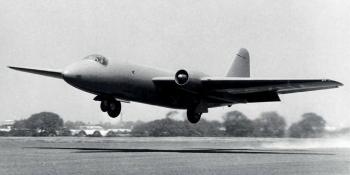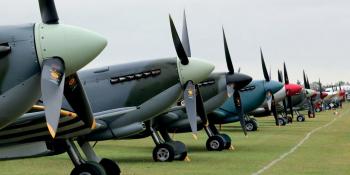Bomber Command (reluctantly) commits to invasion preparations
After its winter campaign against Berlin, in mid-April 1944 the might of Bomber Command and the bomber strength of the US Eighth Air Force came under the operational control of the Supreme Headquarters Allied Expeditionary Force. This change ensured that all targeting and efforts focused on preparing for and supporting the invasion, with transport targets a priority, but it was not well received by Bomber Command chief Arthur Harris.
The night before the invasion, and in addition to supporting the sophisticated deception plan, Bomber Command was tasked with neutralising coastal defences adjacent to the invasion beaches. Four radio centres and two radar sites had to be destroyed and German gun batteries attacked. For example, in the early hours of June 4, the German wireless interception station at Ferie D’Urville on the Cherbourg Peninsula was bombed out by almost 100 Lancasters flying in near cloudless conditions.
Immediately prior to the landings, ten heavy coastal gun batteries were to be bombed by more than 1,500 aircraft, comprising nearly 900 Lancasters, 550 Halifaxes and the few remaining Stirlings. Target marking was provided mainl…




